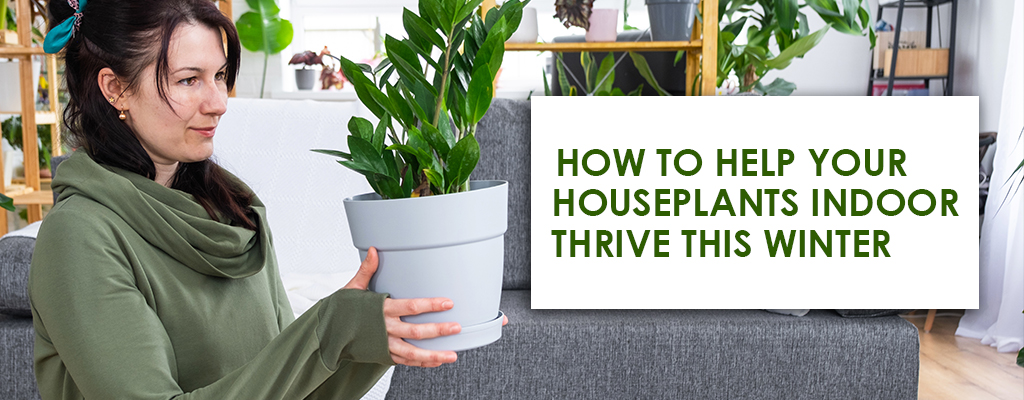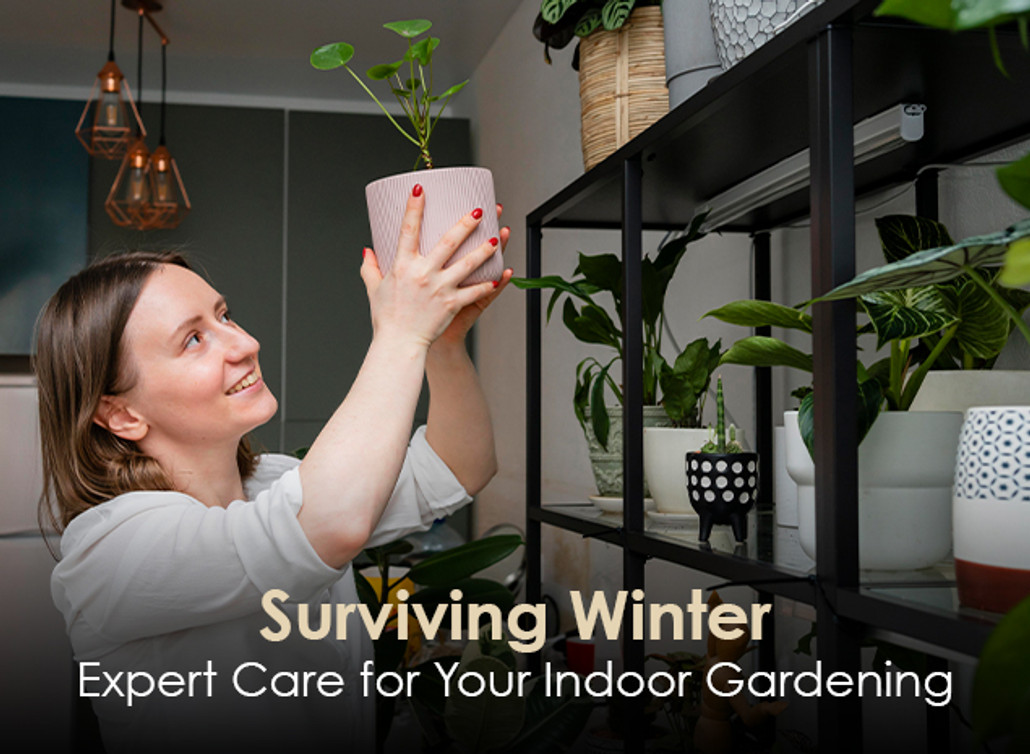Posted by Planet Pantry on 15th Jan 2025
Surviving Winter: Expert Care for Your Indoor Gardening

Winter can be a challenging season for your beloved houseplants indoor, but with a bit of care and attention, they can flourish even in the coldest months. The shorter days and lower humidity levels can disrupt their growth, but fear not—these winter tips will help your leafy companions stay healthy and happy.

1. Light: Mimic the Sun's Brilliance
During winter, natural sunlight becomes a precious commodity. Many houseplants indoor suffer from the lack of sufficient light, which can lead to leggy growth or yellowing leaves. Move your plants closer to windows that receive ample sunlight, ideally south-facing ones. If sunlight is scarce, consider using grow lights to supplement their needs. Opt for full-spectrum LED lights that mimic natural daylight to keep your plants thriving.
Rotate your plants weekly to ensure even exposure, as they can lean toward light sources over time. This small adjustment prevents uneven growth and maintains their aesthetic appeal.
2. Water Sparingly but Wisely
One of the most common mistakes in winter indoor gardening is overwatering. With cooler temperatures and slower plant growth, the soil takes longer to dry out. Always check the soil's moisture level before watering. Insert your finger an inch into the soil—if it feels dry, it’s time to water.
When watering, use lukewarm water to avoid shocking the roots. Remember, it's not just about frequency but also about how you water. Ensure pots have proper drainage to prevent waterlogging, which can lead to root rot—a dreaded affliction for any indoor gardening enthusiast.

3. Humidity: Combat the Dry Air
Central heating can be a nemesis to your houseplants indoor, as it strips the air of much-needed moisture. Increase humidity around your plants by misting them regularly or placing them near a humidifier. Alternatively, group plants together to create a microclimate where they can share humidity.
Another effective method is the pebble tray technique: place a layer of pebbles in a shallow tray, add water, and set your plant pots on top. As the water evaporates, it boosts humidity around the plants, creating a more tropical environment they’ll adore.
4. Dust and Prune for Perfection
Dust can accumulate on leaves, especially during the less ventilated winter months. This layer not only looks unsightly but also blocks the leaves’ ability to photosynthesize efficiently. Gently wipe leaves with a damp cloth to keep them clean and shiny. For plants with delicate or hairy leaves, like African violets, use a soft brush instead.
Pruning is equally important in indoor gardening during winter. Remove any dead or yellowing leaves to improve air circulation and redirect the plant's energy toward healthy growth. A little grooming goes a long way in maintaining your plants’ vitality.

5. Fertilizer: Use It Sparingly
In winter, most plants enter a period of dormancy or slowed growth, meaning their nutrient requirements decrease. Over-fertilizing during this time can do more harm than good. If you must fertilize, use a diluted solution at half the recommended strength and apply it only once a month. Let your plants rest and prepare for the vigorous growth they’ll experience come spring.
6. Temperature: Find the Sweet Spot
Sudden temperature fluctuations can stress your houseplants indoor. Keep them away from drafty windows, doors, and heating vents. Most indoor plants thrive in temperatures between 65°F and 75°F. If your home gets chilly at night, consider moving your plants to a warmer spot or using a plant-friendly heat mat.
Caring for your houseplants indoor during the colder months doesn’t have to be a daunting task. With these winter tips, you can maintain a thriving indoor gardening sanctuary while adding warmth and vitality to your home. A little effort and attention to detail will ensure your green friends are ready to burst into life when spring arrives.



